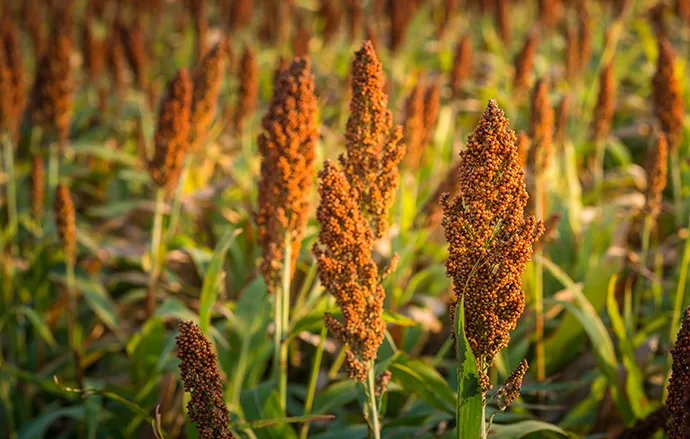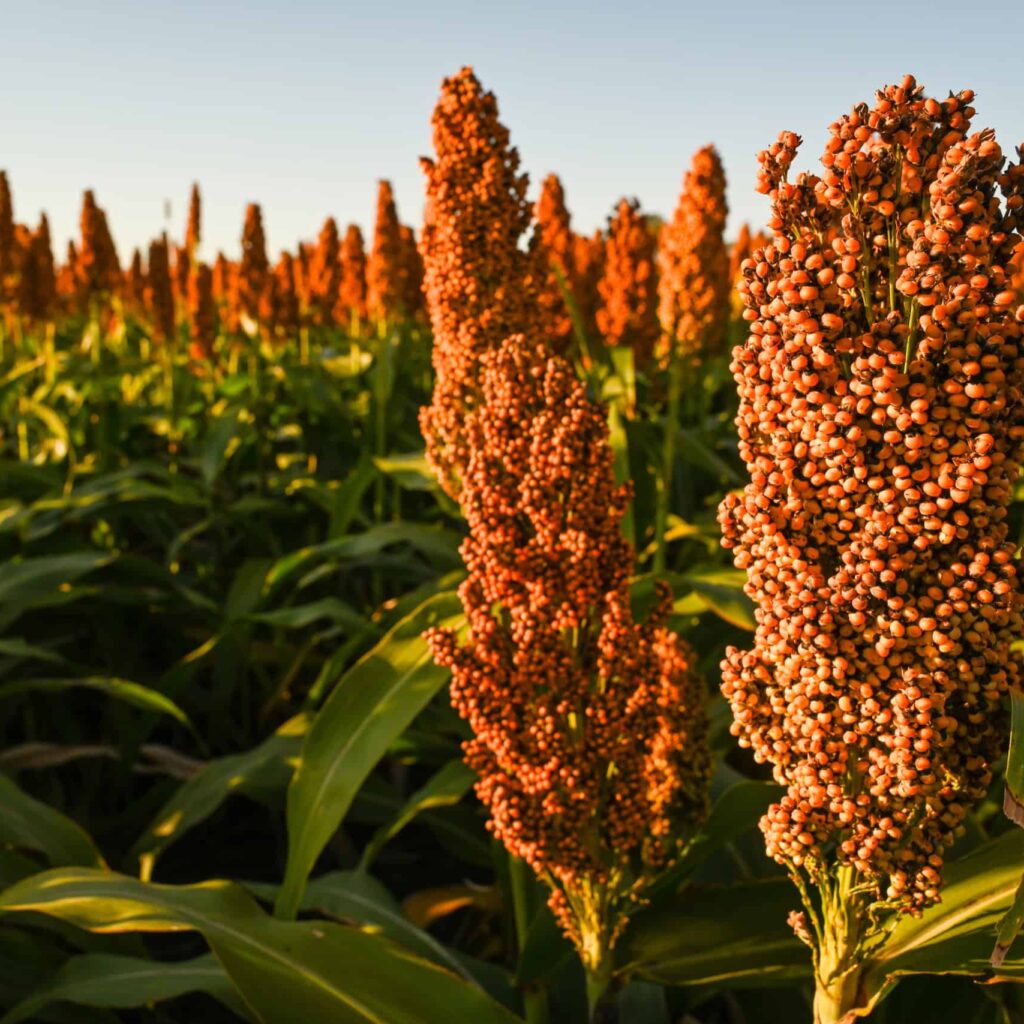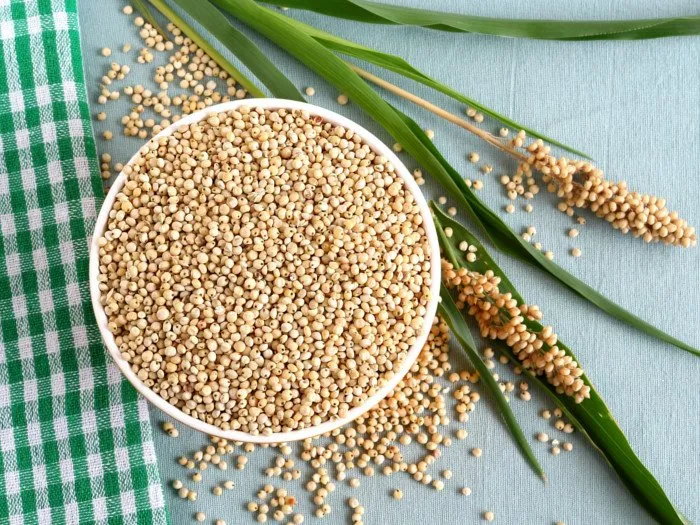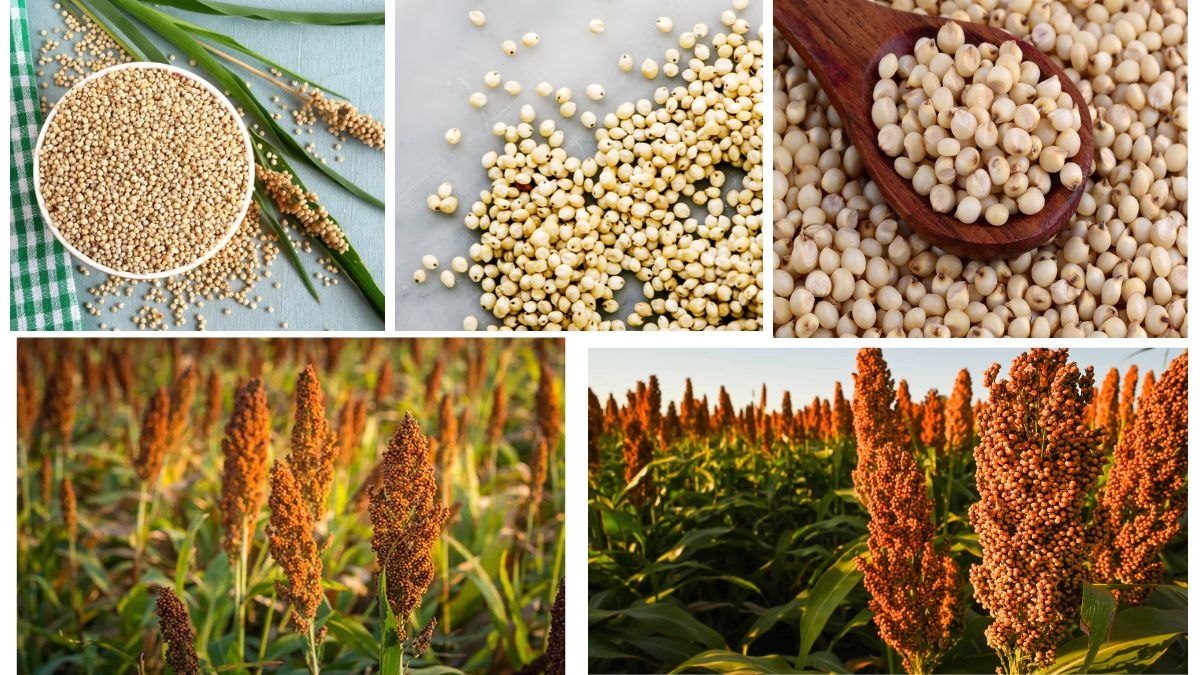Sorghum, a versatile and drought-tolerant grain, has long been a staple crop in many parts of the world. Grown primarily for food, fodder, and industrial uses, sorghum plays a critical role in ensuring food security in arid and semi-arid regions. With climate change increasing the demand for hardy crops, sorghum’s significance continues to grow. But when it comes to global dominance in sorghum production, one nation clearly stands above the rest.
So, which country is the largest sorghum producer in the world? The answer is the United States of America.
What Is Sorghum?

Sorghum is a cereal grain belonging to the grass family (Poaceae), scientifically known as Sorghum bicolor. It is a vital food source in Africa and Asia and is also used for livestock feed, ethanol production, and as a gluten-free flour substitute.
Sorghum is highly adaptable to extreme weather conditions, particularly heat and drought, making it an ideal crop in regions where other grains fail. The plant’s resilience, coupled with its short growing cycle, contributes to its popularity in developing agricultural economies.
Global Overview of Sorghum Production

Sorghum is cultivated in over 100 countries across six continents. However, only a few countries contribute significantly to global production. According to data from the Food and Agriculture Organization (FAO) and the United States Department of Agriculture (USDA), global production of sorghum averages around 58–60 million metric tons annually.
The top five sorghum-producing countries typically include:
- United States
- Nigeria
- India
- Mexico
- Sudan
Let’s explore why the United States leads the global production and how other countries contribute to the worldwide sorghum supply.
The United States: The Sorghum Superpower

The United States is the undisputed leader in sorghum production, accounting for roughly 15–20% of the world’s total output. The majority of U.S. sorghum is grown in the Great Plains, especially in Kansas, Texas, Colorado, Oklahoma, and Nebraska.
Key Statistics (as of 2023):
- Annual production: ~9–10 million metric tons
- Top producing state: Kansas (often called the “Sorghum Capital of the World”)
- Main uses: Livestock feed, ethanol fuel, and export
- Major export markets: China, Mexico, Japan
The rise in demand for gluten-free and whole-grain products in the U.S. and abroad has further fueled sorghum’s popularity. Additionally, its role in sustainable agriculture—due to lower water needs and high yields—makes it a favorite among farmers facing climate challenges.
Nigeria: Africa’s Sorghum Giant

Nigeria is the second-largest sorghum producer globally and the top producer in Africa. With millions of small-scale farmers involved in sorghum cultivation, it forms a staple part of the Nigerian diet and is used in making traditional dishes and beverages.
Key Statistics:
- Annual production: ~6–7 million metric tons
- Primary use: Food (porridge, beer, flour) and animal feed
- Main regions: Northern Nigeria—particularly states like Kano, Katsina, and Kaduna
Despite its high production, Nigeria faces challenges like low mechanization and yield-per-hectare ratios, which affect overall productivity.
India: A Heritage of Millets

India ranks third in global sorghum production and has a long history of cultivating the crop, especially in the central and western regions like Maharashtra, Karnataka, and Telangana.
Key Statistics:
- Annual production: ~4–5 million metric tons
- Primary uses: Food (roti, porridge), fodder
- Government support: Promoted as part of the “Millets Revolution” to enhance nutrition
With increasing awareness of sorghum’s nutritional benefits, there’s a renewed interest in incorporating it into modern diets, especially in urban India.
Mexico: Dual-Purpose Sorghum Producer
Mexico, the fourth-largest producer, grows sorghum for both human consumption and livestock feed. The crop is primarily cultivated in northern states such as Tamaulipas and Sinaloa.
Key Statistics:
- Annual production: ~4 million metric tons
- Usage: Animal feed, tortillas, beer production
- Export destinations: Some exports to neighboring Central American countries
Mexico benefits from proximity to the U.S. market and similar climatic conditions for large-scale production.
Sudan: Feeding the Horn of Africa
Sudan ranks fifth globally and remains one of the most important producers in East Africa. Sorghum is the country’s main cereal crop and is integral to food security.
Key Statistics:
- Annual production: ~3–4 million metric tons
- Main uses: Human food and animal fodder
- Challenges: Political instability, water scarcity, and outdated farming methods
Despite its challenges, sorghum remains the backbone of Sudan’s agricultural economy.
Comparative Table of Top Sorghum Producers (2023 estimates)
| Rank | Country | Annual Production (Million Metric Tons) | Main Uses |
|---|---|---|---|
| 1 | USA | 9–10 | Feed, fuel, export |
| 2 | Nigeria | 6–7 | Food, beer, fodder |
| 3 | India | 4–5 | Food, fodder |
| 4 | Mexico | 4 | Feed, tortillas |
| 5 | Sudan | 3–4 | Food, fodder |
Why Sorghum Matters in the Modern World
- Climate Resilience: Sorghum’s ability to thrive in dry, low-fertility soils makes it a go-to crop amid increasing climate uncertainties.
- Nutritional Value: Rich in fiber, antioxidants, and gluten-free, sorghum is gaining popularity in the health food industry.
- Sustainable Farming: Sorghum requires less water and fewer inputs than many other grains, helping farmers reduce environmental impact.
- Biofuel Potential: In countries like the U.S., sorghum is increasingly used in bioethanol production, contributing to green energy goals.
Future Outlook
With ongoing research into high-yield and pest-resistant varieties, sorghum’s production is expected to grow, especially in water-stressed regions. Countries like Ethiopia, China, and Australia are also increasing their production capacity.
Moreover, international organizations are pushing for sorghum to play a larger role in global food systems, particularly in countries facing food insecurity.
Conclusion
In summary, the United States holds the title of the largest sorghum producer in the world, thanks to its advanced agricultural practices, export infrastructure, and growing demand for sustainable crops. However, other countries like Nigeria, India, and Mexico are also critical players in maintaining global supply.
Sorghum’s role in nutrition, sustainability, and climate resilience positions it as a grain of the future. Understanding the dynamics of its production will be crucial for policymakers, agribusinesses, and researchers striving to feed a growing global population under changing climatic conditions.







Leave A Comment